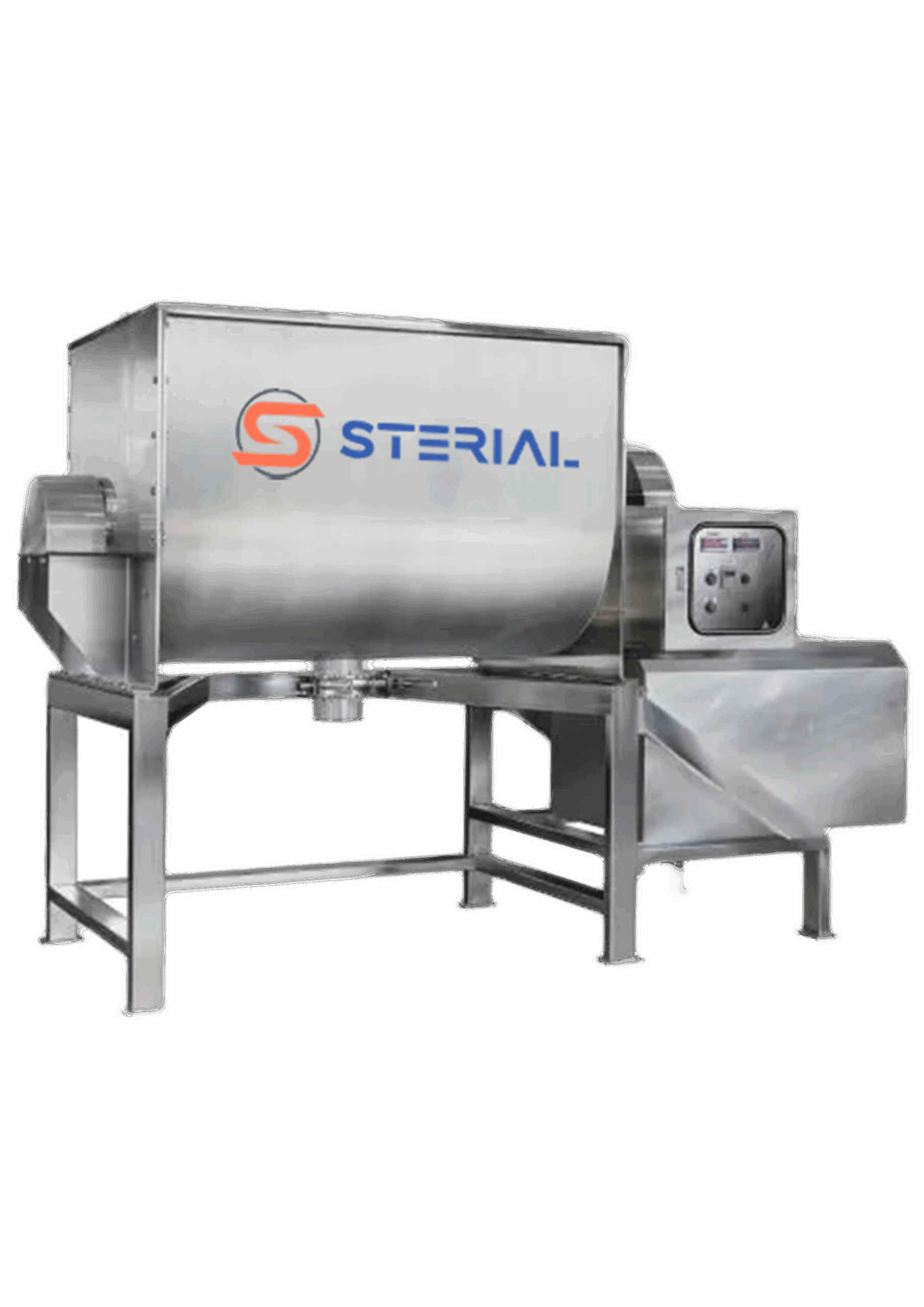Application & Process
A ribbon blender is a specialized blending machine commonly used in industries such as pharmaceuticals, chemicals, food processing, and cosmetics. It is designed to mix and blend large quantities of powders, granules, or solid materials to achieve a uniform and homogeneous mixture.
A typical Ribbon Blender consists of a cylindrical-shaped mixing chamber or drum made of high-quality stainless steel or other durable materials. The drum is equipped with a rotating shaft and mixing blades. The blades can have various configurations, such as paddle-shaped, ribbon-shaped, or plow-shaped, depending on the specific application and mixing requirements.
Ribbon blenders have a wide range of applications across different industries. In the pharmaceutical industry, they are used for blending active pharmaceutical ingredients (APIs), excipients, and other additives to create pharmaceutical formulations such as tablets, capsules, or powders. In the chemical industry, ribbon blenders are used for mixing and blending various chemicals, pigments, dyes, fertilizers, or catalysts. They are also employed in the food processing industry for mixing ingredients in the production of bakery products, spices, seasonings, and powdered beverages. Additionally, ribbon blenders are utilized in the cosmetics industry for blending cosmetic powders, creams, lotions, and other beauty products.
The process of mass mixing involves loading the materials to be blended into the mixing chamber of the ribbon blender. The rotating shaft with the mixing blades inside the chamber is then activated. As the blades rotate, they create a tumbling and rolling motion, ensuring that the materials are thoroughly mixed and blended together. This mixing action helps break down any agglomerates or clumps and promotes the uniform distribution of particles throughout the mixture. The speed and duration of the mixing process can be adjusted to achieve the desired blending result based on the specific characteristics of the materials.
Uniform Mixing :Ribbon blenders ensure a consistent and homogeneous blend, reducing the risk of ingredient segregation or uneven distribution.
Efficiency : The rotating blades efficiently mix large quantities of materials, reducing blending time and improving productivity.
Versatility : Ribbon blenders can handle a wide range of materials, including powders, granules, and solid particles, making them suitable for various applications.
Customization : The design and configuration of the mixing blades can be tailored to specific material properties and blending requirements.
Easy Maintenance : The construction of ribbon blenders allows for easy cleaning and maintenance, ensuring hygienic operation and minimizing cross-contamination.
In summary, ribbon blenders are reliable and efficient machines for achieving uniform mixing and blending of materials in industrial processes. Their robust construction, versatility, and ability to handle large batch sizes make them essential equipment in many manufacturing industries.

| Model | Gross Volume approx. | Working Volume approx. | Power |
| RM-10 | 10 Liters | 5 Liters | 0.5 H.P. |
| RM-50 | 50 Liters | 20 Liters | 1 H.P. |
| RM-75 | 75 Liters | 50 Liters | 1 H.P. |
| RM-150 | 150 Liters | 100 Liters | 2 H.P. |
| RM-250 | 250 Liters | 150 Liters | 3 H.P. |
| RM-450 | 450 Liters | 300 Liters | 5 H.P. |
| RM-600 | 600 Liters | 450 Liters | 7.5 H.P. |
| RM-1100 | 1100 Liters | 750 Liters | 10 H.P. |
| RM-1500 | 1500 Liters | 1000 Liters | 12.5 H.P. |
| RM-2000 | 2000 Liters | 1250 Liters | 15 H.P. |
| RM-3000 | 3000 Liters | 1875 Liters | 20 H.P. |
| RM-5000 | 5000 Liters | 3000 Liters | 25 H.P. |
| RM-10000 | 10000 Liters | 6000 Liters | 40 H.P. |
* Power voltage can be adjusted as per the customer’s domestic power voltage requirements.
* Rights of technical improvements & modification reserved.
* Illustrations & dimensions are shown for information purpose only.


